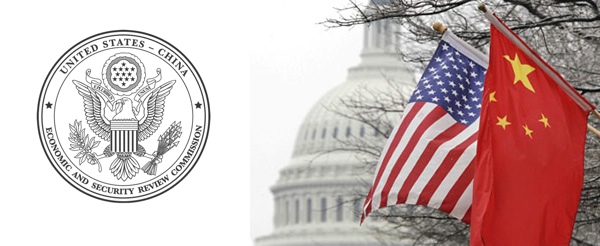The 2012 Annual Report to Congress from the U.S.- China Economic and Security Review Commission (USCC) recommends that Congress seek to “access disparities in estimates of the size and disposition of China’s nuclear forces.” The Commission, established in October 2000 in the wake of the highly politicized debates about U.S. China policy in the later years of the Clinton administration, also recommends that Congress “require the U.S. Department of State to detail current and planned efforts to integrate China into existing and future nuclear arms reduction, limitation, and control discussions and agreements.”
Neither recommendation makes sense.
Congress already has access to numerous official and unofficial assessments of the size and disposition of China’s nuclear forces and there is very little disparity between them. There are only a few unofficial outliers, already widely known and easily accessible to the relevant congressional committees. The first is a report produced from research conducted by a group of undergraduate students at Georgetown University. The claims in their report on the size and disposition of China’s nuclear forces are based on discredited sources. The other two outliers, produced by Russian observers Viktor Yesin and Aleksey Arbatov, suffer from the same deficiency. Responding directly to the claims in these reports, Air Force Gen. Robert Kehler, the head of of U.S. Strategic Command stated, “I do not believe that China has hundreds or thousands more nuclear weapons than what the intelligence community has been saying.” The well-established consensus, supported by the long-standing, constantly updated observations and analyses of the U.S. intelligence community, is that China possesses several hundred nuclear warheads.
The second USCC recommendation asks for “details” on something the commissioners should know does not exist. There are no “current and planned efforts to integrate China into existing and future nuclear arms reduction, limitation and control discussions and agreements.” China insists it will not enter into discussions about the size and disposition of its nuclear arsenal until the U.S. and Russia significantly reduce the size and alter the disposition of their much larger and more capable nuclear arsenals. This is well known by every relevant congressional committee, the State Department and the Department of Defense.
If the USCC believes the U.S. Congress should take up the issue of China’s role in nuclear arms control there are two simple steps Congress could take to constrain the growth of China’s nuclear arsenal.
The first is to ratify the Comprehensive Nuclear Test Ban Treaty (CTBT). This was the first international nuclear arms control treaty negotiated with the active participation of top officials and scientists in the Chinese nuclear weapons complex. Many of the Chinese participants in the negotiations staked their careers and their reputations on the successful conclusion of that agreement. China has made it clear that it will ratify the CTBT after it can give consideration to whatever reservations the U.S. Senate might attach to U.S. ratification. U.S. Senate reservations to the Chemical Weapons Convention, ratified on the same day by both countries in 1997, surprised Chinese negotiators at the last minute.
Even if the treaty did not enter into force because of the failure of other nations to ratify, U.S. and Chinese ratification of the CTBT would prevent China from testing new nuclear weapons designs. Perhaps even more importantly, ratification would increase the credibility of nuclear arms control among the new Chinese leadership and give a much-needed boost to the domestic political legitimacy of the Chinese arms controllers who can lay claim to this accomplishment.
The second step Congress can take is to lend its support to administration efforts to push forward negotiations on a Fissile Material Cutoff Treaty (FMCT). The most effective way to cap the size of China’s nuclear arsenal is to put in place a verifiable and permanent halt to the production of the fissile materials used to manufacture nuclear warheads. China’s stocks are known to be limited, and China appears to be abiding by an informal international moratorium on the production of additional weapons usable fissile material. Beginning negotiations on an FMCT would cement that moratorium in place while the negotiations are taking place, and could eventually lead to a complete accounting of past production, which would further solidify U.S. intelligence estimates on the size of China’s existing nuclear arsenal.

